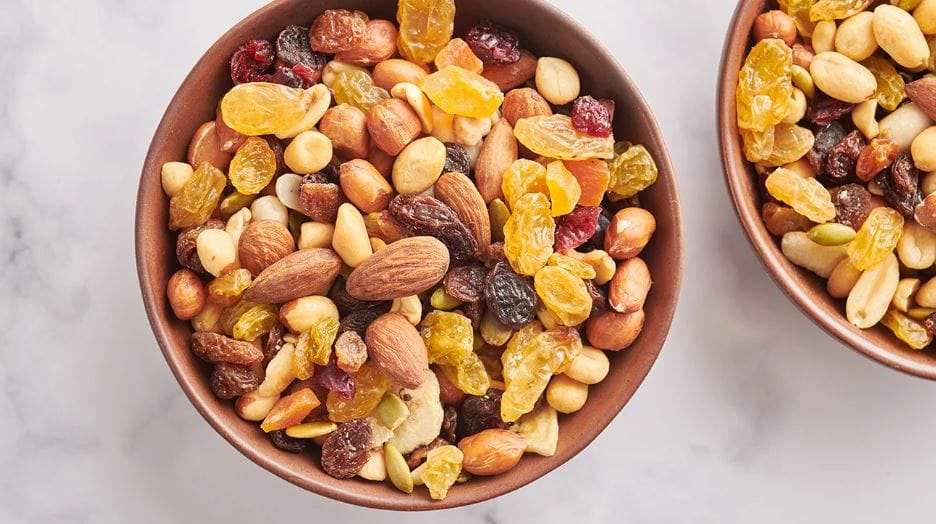Kiki's Top Ramens: Exploring Flavors, Textures, And Brands

Ramen noodles have come a long way from being a quick, budget-friendly meal option for college students. Today, they embody a diverse culinary experience with flavors and textures that excite food enthusiasts around the globe.
From traditional Japanese broths to innovative, modern twists, ramen has become a staple comfort food that's both accessible and gourmet.
In this comprehensive review, we’ll take you on a delicious journey through the world of ramen. We’ll explore various brands, taste profiles, textures, and cooking methods to help you discover the best ramen noodles to satisfy your cravings.
Whether you’re a seasoned ramen connoisseur or just venturing into this flavorful world, our insights will guide you in making the perfect choice for your next meal. Let's slurp in and get started!
How We Choose The Best Ramen Noodles
With countless products on the market, it can be overwhelming and time-consuming to find the best one for your budget and needs.
Reading reviews and testing products is just not enough because there are so many variables involved. And let's face it, most of them are just trying to take your money.
But don't worry, Kiki has got you covered. Using a pendulum, Kiki energetically tests each product to give you an accurate rating out of 10 for quality. Say goodbye to wasting time and money on subpar products – Kiki's recommendations will ensure you're getting the best bang for your buck.

Japanese Ramen Noodle By Hakubaku
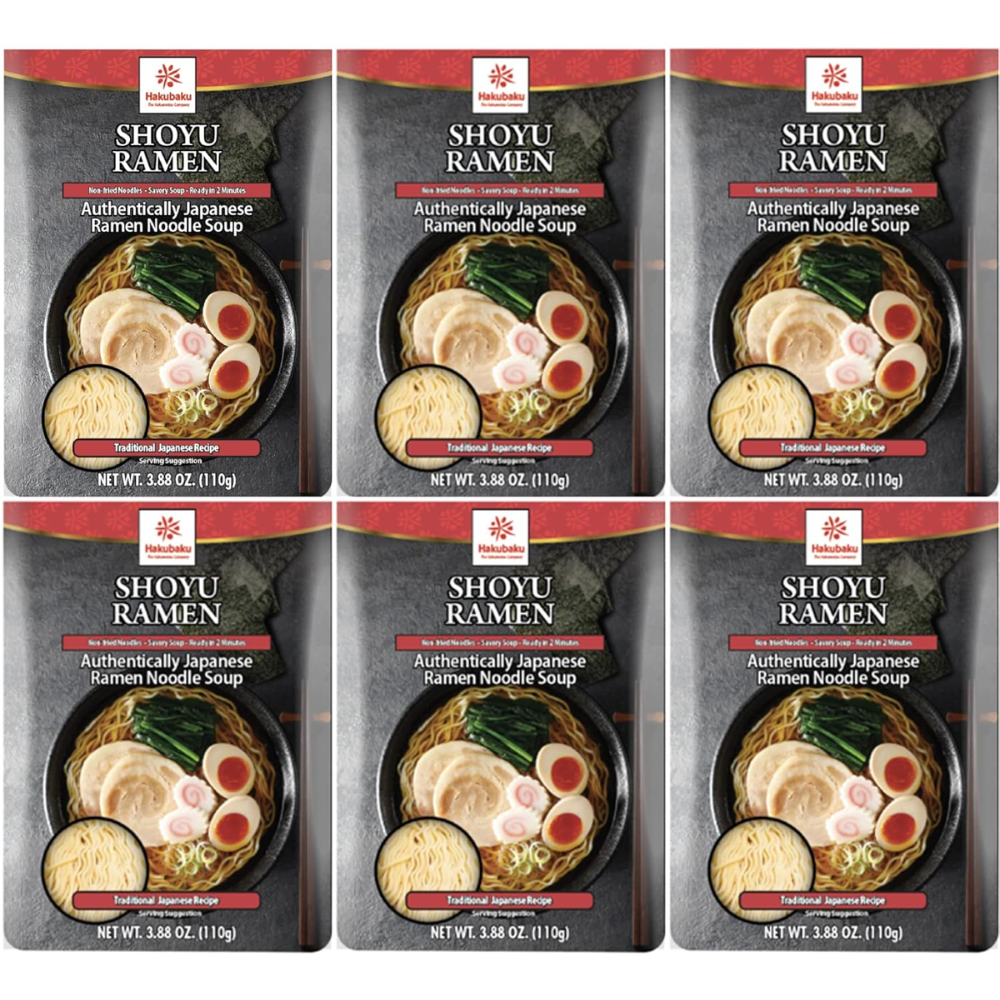
#1 Best Ramen Noodles
Japanese Ramen Noodle Soup, SHOYU, 3.88oz (Pack of 6)
Energy Test Levels: 9.4/10
What's Good About It
Looking to experience the true flavors of Japan right in the comfort of your own home? Look no further than the Japanese Ramen Noodle by Hakubaku. Crafted with the utmost care and dedication, this authentic and traditional ramen noodle soup will transport your taste buds to the bustling streets of Japan.
But what sets this ramen apart from others on the market? For starters, the noodles are non-fried, giving them a softer texture that is reminiscent of homemade noodles. The wavy shape of the noodles also ensures that they hold up to any broth, keeping their texture until the very last slurp.
And don't worry about needing to make multiple trips to the store - these noodles are shelf-stable, making them convenient and always ready for your next ramen craving.
But what truly makes this ramen stand out is the savory and flavorful SHOYU soup stock. Made with the perfect balance of ingredients, this soup base complements any topping or combination you choose to add. Whether you prefer a classic tonkotsu broth or like to get creative with your toppings, this soup stock will not disappoint.
This product is proudly crafted in Japan, using traditional methods to capture the essence of a local ramen restaurant and deliver it right to your kitchen. With each bite, you'll taste the harmony, balance, flavor, and great noodle texture that has made ramen a beloved staple in Japanese cuisine.
So why settle for a subpar instant ramen experience when you can enjoy the real thing with the Japanese Ramen Noodle by Hakubaku? Order yours today and elevate your at-home ramen game to new heights.


Chicken Noodles By Maruchan

#2 Best Ramen Noodles
Instant Ramen Noodles, Ready to Eat Meals, 3 Oz, 24 Count
Energy Test Levels: 9.5/10
What's Good About It
Introducing Chicken Noodles by Maruchan, the perfect solution for quick, flavorful meals that the whole family can enjoy. With a cooking time of just 3 minutes, this product offers convenience without sacrificing taste. Simply boil 2 cups of water, add the noodles, and cook for 3 minutes while occasionally stirring. Then turn off the heat, add the seasoning packet, and stir for an additional minute until fully dissolved. The result? A steaming hot bowl of delicious chicken-flavored ramen that is sure to satisfy any taste buds.
But what sets Chicken Noodles by Maruchan apart from other chicken noodle soups on the market? Its packed-with-flavor taste. Unlike your ordinary chicken noodle soup, this product offers a bold and savory taste that will keep you coming back for more. The chicken flavor is expertly seasoned to perfection, making every bite a burst of deliciousness.
It's no wonder that Maruchan is one of the nation's favorite ramen soup brands. With a wide variety of delicious flavors, including low-sodium options and authentic ethnic flavors, Maruchan is a trusted choice for families everywhere.
Not only is Chicken Noodles great on its own, but it also makes a creative addition to any recipe. The possibilities are endless, from adding it to stir-fries or casseroles, to using it as a topping for salads or even pizza. Let your imagination run wild and see how versatile this product can be.
So why wait? Treat yourself and your family to the deliciousness of Chicken Noodles by Maruchan. With its quick cooking time, packed-with-flavor taste, and endless possibilities, it's the perfect meal solution for any busy household. Go ahead and indulge in a hot bowl today, you won't regret it.

Chicken Ramen Noodle From Ramen Express

#3 Best Ramen Noodles
Chicken Flavor Ramen Noodle Packs, 3 Oz Each (Pack Of 24)
Energy Test Levels: 9.4/10
What's Good About It
Introducing Ramen Noodle from Ramen Express - the tasty instant soup that caters to all dietary restrictions. No matter your food preferences, Ramen Noodle has got you covered with its vegetarian and certified halal recipe. And for those with allergies, there's no need to worry - this delicious soup is dairy-free and egg-free. That means everyone can enjoy the mouth-watering flavors without any restrictions or limitations.
But that's not all - Ramen Noodle is also a guilt-free option for those looking for healthier instant meal options. With no added MSG, you can stock up your Amazon pantry with these delicious and convenient noodles, without worrying about any yucky stuff in the ingredients. It's a win-win situation for your taste buds and your health!
And if you're conscious about the environment, Ramen Express has got you covered there too. These noodles are ethically made in the USA, supporting local production and reducing the eco-footprint. Plus, all packaging is biodegradable and recyclable, making it an environmentally-friendly choice. You can feel good about choosing Ramen Noodle for both your tastebuds and the planet.
So why settle for boring, limited options when you can have Ramen Noodle from Ramen Express? It's the perfect choice for those with dietary restrictions, health-conscious consumers, and environmentally-aware individuals. Treat yourself to the delicious, convenient, and ethical option with Ramen Noodle from Ramen Express today!
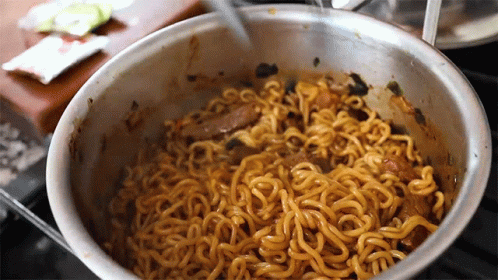
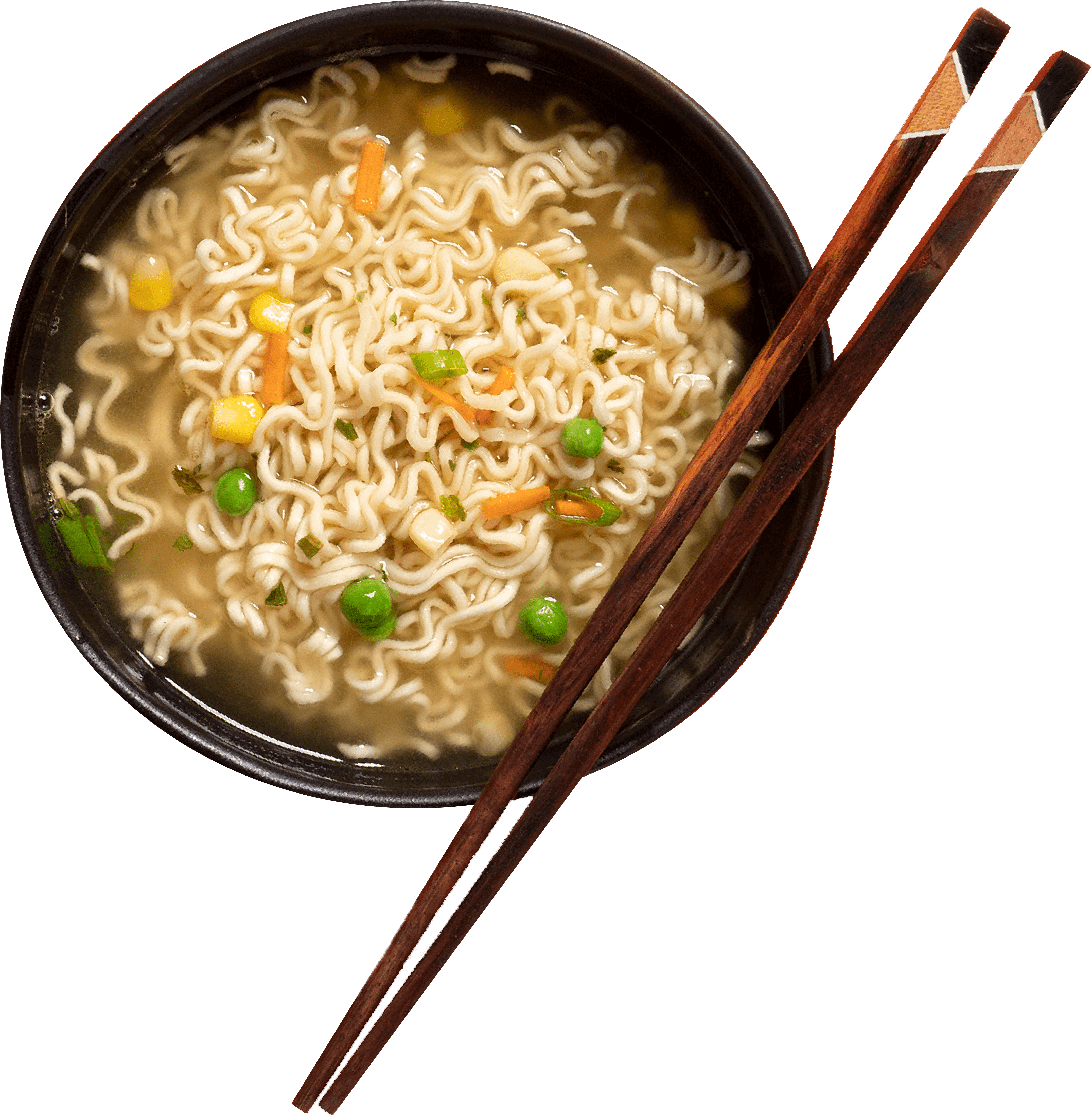
Ramen Noodles FAQs
Craving a warm and comforting bowl of ramen, but not sure where to start?
Navigating the world of ramen can be overwhelming with so many different types and variations.
Luckily, we've got you covered with our comprehensive list of frequently asked questions about ramen noodles. From types of broth to noodle thickness, we've got all the answers to help you create the perfect bowl of ramen at home.
Say goodbye to confusion and hello to delicious ramen every time.
What Are Ramen Noodles Made Out Of?
Traditionally, ramen noodles are made from four main ingredients: wheat flour, water, salt, and kansui (alkaline mineral water). The process of making ramen noodles is not an easy one and requires skilled artisans to achieve the perfect texture and flavor.
Firstly, high-quality wheat flour is mixed with water to form a dough. This dough must be kneaded for a long time to develop gluten strands which give the noodles their elasticity. Next, the dough is left to rest for several hours before being rolled out into thin sheets.
The next crucial step in making ramen noodles is boiling them in alkalinized water or kansui. This process gives the noodles their unique yellow color and chewy texture that we all love. Kansui also adds an essential minerally flavor that enhances the taste of the dish.
Now comes the most challenging part - cutting and shaping the noodles by hand! Traditional ramen noodle makers use sharp knives called "menkiri bocho" to cut delicate strands of noodles from these thin sheets of dough. The cuts are done quickly and require precision as any mistakes can ruin the entire batch.
Finally, after cutting all those beautiful strands of noodles comes another equally important step- drying them properly. Drying allows for preservation so that you can enjoy your beloved bowl of ramen even if it's been sitting on your pantry shelf for months!
However, with modern technology taking over traditional methods in recent years, many manufacturers now use machines for mass production instead of hand-making their ramen noodles like they used to do back then.
But don't worry; this does not change anything about how your mouth-watering bowl of steaming ramen is made. The ingredients and process remain the same, ensuring that you get to enjoy the authentic taste of delicious ramen every time.
Are Ramen Noodles Healthy?
Ramen noodles have gained immense popularity in recent years, and it's not hard to see why. They are quick, easy to prepare, and budget-friendly. However, the question remains - are they healthy?
Firstly, let's understand what exactly ramen noodles are made of. Traditionally, they consist of wheat flour dough that is combined with water and alkaline salts (known as kansui) to give them their distinctive texture. This dough is then cut into thin strips or molded into various shapes which are then air-dried or fried before packaging.
Now let's address the elephant in the room - instant ramen noodles. These pre-packaged versions often come with seasoning packets that contain high amounts of salt and unhealthy additives like monosodium glutamate (MSG). While these may enhance the taste, they can also pose several health risks when consumed frequently.
But fear not! Not all ramen noodles fall under this category. In fact, if you make your own homemade broth and use whole wheat or gluten-free noodles instead of processed ones from a packet, you can enjoy a nutritious bowl of ramen without any guilt.
One major misconception about ramen noodles is that they lack nutrients. While it's true that they aren't as nutrient-dense as other healthier options like vegetables or lean proteins, they do provide some essential vitamins and minerals such as iron, calcium, potassium, and B vitamins.
Which Ramen Is Better Japanese Or Korean?
This is a highly debated topic among ramen aficionados all over the world. Both Japanese and Korean ramen have their own unique flavors and styles that make them stand out. It's difficult to say definitively which one is better, as taste is subjective and everyone has their own preferences. However, let's take a closer look at the two types of ramen to understand what sets them apart.
Japanese ramen originated from China but has evolved into its own distinct dish over the years. The noodles used in Japanese ramen are made with wheat flour and are typically thinner than Korean noodles. The broth for Japanese ramen is usually clear or light in color, but don't be fooled by its appearance - it packs a ton of flavor. Different regions in Japan have their own variations of ramen, such as miso-based or sweet soy sauce-based broths, giving diners plenty of options to choose from.
On the other hand, Korean ramen became popular after World War II when American soldiers introduced instant noodles to Korea. Unlike Japanese noodles, Korean noodles are made with potatoes or sweet potato starch and have a chewier texture.
The broth for Korean ramen tends to be spicy and rich in flavor thanks to ingredients like gochujang (red chilli paste) and kimchi (fermented vegetables). Some may find this type of broth too overwhelming, but for those who love bold flavors, it hits just the right spot.
One thing that sets Japanese and Korean ramen apart is also how they're prepared. In Japan, making good quality broth requires hours of simmering bones and other savory ingredients together until they reach a rich consistency. On the other hand, instant packets are often used as bases for making Korean-style broths quickly at home or in restaurants.
Another aspect that differs between these two types of Ramen is toppings. While both use similar toppings like sliced pork belly, chopped green onions, and soft-boiled eggs, Japanese ramen often includes additional toppings like dried seaweed and bamboo shoots. Korean ramen, on the other hand, may also have ingredients like fish cakes and pickled radish.
In terms of nutritional value, both Japanese and Korean ramen can be high in sodium and carbohydrates. However, when it comes to health benefits, Japanese ramen might have an edge as its broths tend to use more nutrient-rich ingredients like dried sea kelp and shiitake mushrooms.
In conclusion, both Japanese and Korean ramen offer unique culinary experiences that are worth trying. While one may lean towards the lighter flavors of Japanese ramen or crave the spicy kick of Korean broth, there is no denying that both are delicious in their own ways.
So instead of debating which one is better, why not enjoy them for what they are - flavorful bowls of comfort food! Whether you're a fan of traditional techniques or quick convenience, you'll find something to love in either type of Ramen. Happy slurping!
What Is The Best Thing To Put In Ramen Noodles?
First and foremost, let's talk about the broth. The broth is essentially the soul of any bowl of ramen. It sets the foundation for all other ingredients and can make or break your noodle experience.
Traditional ramen broth can take hours or even days to prepare, using a combination of pork bones, chicken carcasses, vegetables and various spices. However, if you're short on time or don't have access to these ingredients, there are also instant broth packets available in most grocery stores that can still elevate your ramen game.
Once your broth is ready (or prepared), it's time for toppings. Of course, this depends on personal preferences and dietary restrictions but here are some classic must-haves:
1) Chashu (braised pork belly): A melt-in-your-mouth slice of succulent pork belly that adds richness and depth to your bowl.
2) Ajitama (marinated soft-boiled egg): Nothing beats cutting into perfectly cooked egg yolk that oozes out into your soup creating a creamy texture.
3) Menma (bamboo shoots): These add crunchiness and an earthy flavor profile that pairs well with the savory broth.
4) Nori (seaweed sheets): Often overlooked nori provides an umami taste while also giving your bowl some visual appeal.
5) Scallions: A sprinkle of fresh scallions will bring freshness and balance out all other flavors in your bowl.
What Are All Types Of Ramen?
Ramen, a traditional Japanese dish that has gained immense popularity all over the world, is a type of noodle soup characterized by its rich broth and flavorful toppings.
While many may think of ramen as simply a cheap and quick meal option, it is actually a complex and diverse dish with various types that vary in ingredients, preparation methods, and regional influences.
- Shio Ramen: This type of ramen is known for its clear broth made from salt (shio in Japanese) and other savory seasonings such as seafood or chicken. The broth has a light yet intense flavor which pairs well with toppings like char siu pork, bamboo shoots, and green onions.
- Shoyu Ramen: Another classic variety of ramen is shoyu (soy sauce) ramen. Made with soy sauce-based broth that has been simmered for hours to achieve depth in flavor, this type of ramen usually features thin noodles topped with sliced pork belly or chicken chashu along with menma (bamboo shoots), spinach, nori seaweed, and a soft-boiled egg.
- Tonkotsu Ramen: Tonkotsu literally translates to "pork bone" in Japanese and refers to the rich creamy white broth that characterizes this type of ramen. The broth is made by boiling pork bones for several hours until they release their collagen-rich goodness resulting in a thick creamy consistency full of umami flavors. This hearty soup typically comes served with thin straight noodles topped with succulent slices of braised pork belly called chashu.
- Miso Ramen: Hailing from the northern regions of Japan where temperatures can drop below freezing during winter months comes miso ramen – featuring miso paste as the base ingredient for its distinctive reddish-brown colored broth offering an irresistible blend of sweet & tangy flavors. It's also common to find butter added on top of the soup as a finishing touch before serving.
- Tsukemen Ramen: Unlike traditional ramen where broth and noodles are served together, tsukemen (dipping ramen) offers a unique experience by serving the hot broth separately from the cold bouncy noodles allowing for dipping only what you intend to eat. The broth is typically richer in flavor and more concentrated compared to other types of ramen, making it perfect for dipping-style consumption.
- Hiyashi Chuka Ramen: This refreshing summer version of ramen features chilled wheat noodles topped with various colorful vegetables such as cucumber, tomato, carrot and thin strips of egg garnished with sliced ham or prawns. Soy sauce-based dressing is then poured over everything sealing all the flavors together and generating an amazing blend of sweet & savory tastes.
- Abura Soba: Literally translating to "oil noodles" abura soba is a type of dry noodle dish that originated in Tokyo. The soba noodles are boiled as usual but then drained without any excess water being used keeping them dry. Serve along with scallions, chopped pork belly & tamago (omelette slices) while having soy sauce, vinegar & chilli oil on the side allowing you to customize add-ins based on your preference. A light yet satisfying meal option consisting mostly of carbs mixed in some protein equivalent goodness
- Jiro-Gyozara Style Ramen: Although not technically considered "ramen", this variation deserves a mention due to its wild popularity. As opposed to typical bowls made in under 3 minutes, the jiu-gyôza style has certain steps during which one can steam vegetables(nira, gai lan etc.) while also boiling eggs. This allows much flexibility when putting together match-up ingredients such as garlic-infused chicken broth topped off with large rogan josh spiced meatballs, and fried red chillies accompanied by nori strips adding up the signature tingling texture. You may go both ways with either thin-style or chewy noodles.
In addition to these traditional types of ramen, there are also many creative twists and fusions that have become popular in recent years. From spicy kimchi ramen to creamy coconut curry ramen, the possibilities are endless when it comes to flavor combinations.
Best Ramen Noodle For You
After extensive research and taste-testing, it's safe to say that Kiki has found the top contenders for the best instant ramen noodles on the market. From classic favorites to unique flavors, we've covered it all and have narrowed down our top picks for your next noodle craving.
With its rich history and cultural significance, ramen is more than just a cheap college meal. It's an experience that everyone deserves to indulge in. And with our recommendations, you can be sure that your next bowl of ramen will not only satisfy your hunger but also your taste buds.
So go forth and try out these delicious options – from traditional Japanese brands to lesser-known hidden gems – and let us know which one becomes your personal favorite.
We hope this blog post has not only fed your curiosity about thick noodles but also inspired you to venture beyond the instant packs in the grocery store aisle. Happy slurping!
Ramenfully,
Kiki And His Team

